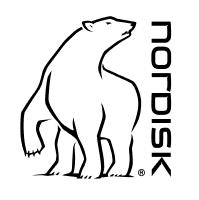


Come spring, the Japanese can experience a Scandinavian outdoor lifestyle on their own turf. A public-private partnership has just lifted the veil for their plans of building a sustainable theme park in the outskirts of one of Japans most populated areas. The idea behind it is to get the visitors to appreciate tranquility, closeness to nature, the dancing flames of a bonfire and the joy of being together with no need for purpose nor propriety.
The Park will be named Nordisk Hygge Circles // Ugakei and is a manifestation of the demand for hygge, sustainability and Danish Design in Japan.

CEO of Danish outdoor brand Nordisk confirms this fact:
” For years, Nordisk has seen great success selling Danish lifestyle in Japan via our much-coveted selection of tents, sleeping bags, equipment and glamping products. I used to live in Japan myself and recognize the Japanese´s desire to winding down from a hectic everyday life, preferably in nature and in a way that makes it enjoyable, comfortable and with minimal impact on Nature. At Nordisk, we believe that Nature is a luxury that is free for all, and that spending time outside simply improves your life. We act according to this view in Japan and see the Japanese consumers agreeing with us to a very large extent.
With this new park in Ugakei, we now get to show what this means in its purest form. A concept, consisting of sustainable Danish design in the middle of the remarkable Japanese nature, with tents, bearing the iconic Polar Bear logo, wooden circular buildings, outdoor activities, “hygge” and with an intimate closeness to the moon and stars above. We are extremely excited to finally present this project!”, says Erik J. Møller, CEO and Owner of Nordisk Company in Denmark.
This is exactly why Nordisk has agreed to take part in the untraditional project. In cooperation with the mayor and city council of Inabe and The Royal Danish Embassy in Tokyo, Nordisk decided to establish an outdoor experience center for hygge and the UN Global Goals. Together, the partnership launched an architecture competition, a competition won by Danish sustainability experts Third Nature in a joint bid with Henrik Innovation and Japanese engineers Structured Environment.
This project marks a shift away from focusing on cities and events in tourism and towards a new type of hosted holiday experience, which does not leave a permanent mark on nature, aligning it with the increased global awareness on sustainability as all structures at the Nordisk Hygge Circles // Ugakei will be built exclusively from degradable or upcycled materials. When adding the characteristic Nordisk cotton tents as semi-permanent facilities, visitors will have a range of comfortable and luxurious choices of accommodation to choose from, which all offer a unique, close-to-nature experience while learning about sustainability, Scandinavian lifestyle and living outdoors.
The park is established in an area with several hiking trails, a great diversity in the surrounding nature, picturesque landscapes and a 1300m mountain with a view to the Pacific Ocean.
The intention of the project is to create a new type of sustainable tourism product. The tourism business is among the greatest sinners in the global green transition, because it typically involves pollutant means of transportation, over consumption and leave heavy footprints in nature. However, it remains an important part of the global economy and the foundation of income for many families in almost any corner of the world.

So the solution is not to remove tourism – it is to change it.
That is why visitors will be educated in sustainable crafts and skills, that will help them develop as persons and parts of the communities they belong to.
Nordisk has tremendous success with their outdoor products in Japan. The Danish brand is known everywhere and has become the very symbol of experiencing the good life in nature as a direct contrast to busy everyday city life. Following their overwhelming popularity, Nordisk hosts annual Hygge Camps, which are essentially an idolizing celebration of Nature, Nordisk and Danish Hygge.
Hundreds of Japanese Nordisk-fans bring all their equipment to the foot of Mount Fuji, where they spend 3 days living “the Danish Dream” and share a big sustainable community.
That concept recently developed into a formal enquiry from the city of Inabe, requesting to collaborate around establishing a permanent Hygge-park. And so the project was born.
The park itself is divided into 3 zones: An accommodation area with huts and established glamping tents, an area by the river, where you can pitch your own tent and a learning area, where activities and events take place.

Everything is constructed in sustainable materials and circular shapes, as a reference to the fact that both the early Danish and the early Japanese civilizations centered around gatherings in circles, where the community would share their resources, like food, water or fire. Besides, the circle is a universal shape symbolizing equality, hospitality and democracy.
“We believe the future is about circularity. Our proposal is composed by a family of circles that define a series of sustainable communities. The master plan and buildings embody a unique environment and a regenerative ‘hygge’ experience in nature. It is our hope that our project will become the base camp for a new type of regional nature-based development that promote sustainable awareness and brings the gift of nature to many urban dwellers,” says lead architect, founder and partner in Third Nature, Flemming, Rafn Thomsen.
The design team comprise of Danish architects Third Nature, Japanese Structured Environment and the sustainability company Henrik Innovation.
Project PartnersInabe is a region around the city of Inabe, situated between Osaka, Kyoto and Nagoya in the middle of Honshu Island, the main Island of Japan. In the rural outskirts of the region you find the Ugakei area, where Nordisk Hygge Circles will be established. www.nordisk.eu Third Nature are Copenhagen based architects delivering sustainable solutions to the buildings of the future, integrating sustainability, function and storytelling. https://www.tredjenatur.dk/ https://www.structuredenvironment.com/ Henrik Innovation https://www.henrik-innovation.dk/ https://japan.um.dk/en.aspx The UN Global GoalsIn 2015, world leaders agreed to 17 Global Goals (officially known as the Sustainable Development Goals or SDGs). These goals have the power to create a better world by 2030, by ending poverty, fighting inequality and addressing the urgency of climate change. Guided by the goals, it is now up to all of us, governments, businesses, civil society and the general public to work together to build a better future for everyone. https://www.globalgoals.org/ |